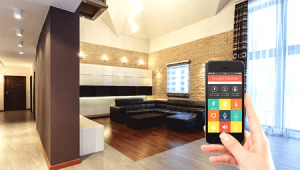Wall and Wall Coverings- Wall and wall coverings encompass a range of materials and techniques used to finish and decorate walls in buildings. Here’s a brief overview:
Wall Types:
- Drywall (Gypsum Board): Commonly used in modern construction, drywall is a plasterboard product used for creating smooth wall surfaces.
- Plaster Walls: Traditional method where plaster is applied over lath or masonry, providing a durable and smooth finish.
- Brick and Stone Walls: Offer a rustic or industrial look, often used in both interior and exterior applications.
- Concrete Walls: Used in modern and industrial designs, concrete can be left exposed or covered.
- Wood Paneling: Adds warmth and texture, available in various styles like shiplap, tongue and groove, or reclaimed wood.
Wall Coverings:
Metal Panels: Used for modern or industrial designs, these can add a sleek and reflective quality to walls.
Paint: The most common wall covering, offering a wide range of colors and finishes (matte, semi-gloss, gloss).
Wallpaper: Comes in various patterns and textures. Modern wallpapers can include vinyl, fabric, and even 3D textures.
Wood Veneer: Provides a natural look and can be used for decorative purposes or to enhance traditional styles.
Tile: Used for both functional and decorative purposes, available in materials like ceramic, porcelain, and glass.
Fabric Panels: These can add texture and acoustical benefits, often used in commercial spaces or for accent walls.
Wall Murals and Decals: Customizable options that can be applied directly to walls for artistic or thematic designs.
What is Required Wall and Wall Coverings
“Required Wall and Wall Coverings” typically refers to the specifications and regulations for walls and their coverings, which can vary based on the type of building, its use, and local building codes. Here’s an overview of what might be required:
1. Building Codes and Standards:
- Fire Resistance: Walls and coverings may need to meet certain fire-resistance ratings to help contain fires and prevent their spread. This includes using fire-rated drywall or fire-resistant coatings.
- Soundproofing: In some settings, especially in multi-family buildings or offices, walls may need to have specific soundproofing qualities to reduce noise transmission.
- Insulation: Walls may need to meet insulation standards for thermal performance to ensure energy efficiency and comfort. This includes using materials with specific R-values (thermal resistance).
2. Structural Requirements:
- Load-Bearing Walls: Some walls are required to support structural loads from floors or roofs. These walls must be built according to engineering specifications.
- Moisture Control: In areas prone to moisture, such as bathrooms or basements, walls and coverings need to be resistant to mold and mildew. This often means using moisture-resistant materials like cement board or waterproof coatings.
3. Aesthetic and Functional Requirements:
- Durability: Wall coverings in high-traffic areas may need to be more durable to withstand wear and tear. This could include using washable paints, durable wallpapers, or protective wall panels.
- Accessibility: In certain public or commercial buildings, walls and coverings may need to meet accessibility standards, ensuring they do not pose obstacles for people with disabilities.
- Maintenance: The chosen materials should be easy to clean and maintain, especially in areas prone to spills, stains, or high usage.
4. Environmental Considerations:
- Sustainability: There may be requirements or preferences for using environmentally friendly materials, such as low-VOC paints, recycled materials, or sustainably sourced wood.
- Energy Efficiency: Walls and coverings might need to contribute to the overall energy efficiency of the building, such as by incorporating thermal insulation.
5. Aesthetic Preferences:
- Design Consistency: Wall coverings should align with the overall design theme of the space, whether it’s for residential, commercial, or industrial use.
- Regulations: Local building codes and regulations may dictate certain design elements or restrictions based on the type of building and its intended use.
For specific requirements, you should check local building codes and regulations, as they can vary significantly depending on location and type of construction.
Who is Required Wall and Wall Coverings
The term “Required Wall and Wall Coverings” is often associated with various stakeholders involved in construction, renovation, and building management. Here’s a breakdown of who might be involved:
1. Architects and Designers:
- Design Requirements: Architects and interior designers specify wall types and coverings based on aesthetic preferences, functionality, and compliance with building codes.
- Code Compliance: They ensure that design choices meet local building codes and regulations.
2. Contractors and Builders:
- Construction Implementation: Contractors are responsible for the physical construction of walls and application of wall coverings.
- Material Selection: They select and install materials based on specifications provided by architects and designers.
3. Building Inspectors:
- Code Enforcement: Inspectors ensure that walls and wall coverings comply with local building codes and safety standards.
- Approval: They perform inspections at various stages of construction to approve compliance with regulations.
4. Building Owners and Property Managers:
- Maintenance and Upgrades: Owners and property managers are responsible for maintaining and updating walls and wall coverings as needed.
- Compliance: They need to ensure that any renovations or repairs adhere to current building codes and standards.
5. Regulatory Agencies:
- Building Codes: Local, state, or national regulatory agencies set and enforce building codes that dictate wall and wall covering requirements.
- Standards Development: These agencies may also develop and update standards related to fire safety, energy efficiency, and other factors.
6. Homeowners and Tenants:
- Choice and Care: In residential settings, homeowners might choose and apply wall coverings, while tenants might be subject to the landlord’s choices and standards.
- Compliance Awareness: Homeowners and tenants should be aware of any relevant requirements, especially if making changes to walls and coverings.
In summary, the responsibility for “Required Wall and Wall Coverings” spans various roles, from design and construction to maintenance and regulation. Each party plays a crucial role in ensuring that walls and coverings meet the necessary requirements and standards.
When is Required Wall and Wall Coverings

“Required Wall and Wall Coverings” come into play at various stages of a building project or renovation. Here’s a timeline of when these requirements typically arise:
1. Design Phase:
- Initial Planning: During the design phase, architects and interior designers determine the types of walls and coverings needed based on the intended use of the space, aesthetic goals, and compliance with building codes.
- Material Selection: Decisions about materials are made, including considerations for fire resistance, soundproofing, insulation, and durability.
2. Permitting Phase:
- Code Compliance: Before construction begins, plans are reviewed by local authorities to ensure they meet building codes and regulations. This includes requirements for walls and wall coverings.
- Approval: Permits are issued based on the compliance of the proposed materials and methods with local building codes.
3. Construction Phase:
- Installation: During construction, walls are built according to the specifications, and wall coverings are applied. This stage involves the physical installation of materials.
- Inspections: Building inspectors check the construction and installation to ensure that it adheres to code requirements and safety standards.
4. Post-Construction:
- Final Inspection: After construction is completed, a final inspection ensures that all walls and wall coverings comply with the approved plans and building codes.
- Occupancy: For commercial and residential buildings, occupancy permits are issued once compliance is confirmed.
5. Renovation and Maintenance:
- Updates and Repairs: When making renovations or repairs, updated requirements must be met. This includes ensuring that any new or modified walls and coverings comply with current building codes.
- Periodic Reviews: Regular maintenance may involve checking and updating wall coverings to ensure continued compliance and functionality.
6. Regulatory Changes:
- Code Updates: Building codes and standards can change, which may affect requirements for walls and coverings. Compliance with updated regulations is necessary for any new construction or major renovations.
In summary, the requirements for walls and wall coverings are considered throughout the entire lifecycle of a building—from design and permitting to construction, inspection, and maintenance. Each stage ensures that the walls and coverings meet necessary standards for safety, functionality, and aesthetics.
Where is Required Wall and Wall Coverings
“Required Wall and Wall Coverings” are relevant in various settings and contexts. Here’s a breakdown of where these requirements apply:
1. Residential Buildings:
- Homes: In private residences, wall and wall covering requirements ensure safety, comfort, and aesthetic appeal. This includes compliance with fire safety, insulation, and moisture control.
- Apartments: Multi-family dwellings have specific requirements for soundproofing and fire resistance between units and common areas.
2. Commercial Buildings:
- Offices: Requirements focus on durability, soundproofing, and aesthetic appeal. Walls and coverings must meet code requirements for fire safety and accessibility.
- Retail Spaces: Wall coverings in retail environments often need to be both attractive and durable to handle high traffic and frequent cleaning.
3. Industrial Buildings:
- Factories and Warehouses: Industrial settings may require specialized wall coverings for durability, ease of cleaning, and resistance to chemicals or abrasion.
- Manufacturing Facilities: Safety and functionality are key, with wall coverings often designed to withstand heavy usage and potential hazards.
4. Public Buildings:
- Schools: Walls and coverings need to meet safety standards, including fire resistance and durability, while also providing a conducive learning environment.
- Hospitals: In healthcare settings, requirements include sanitary and easy-to-clean surfaces, fire resistance, and acoustical considerations.
5. Institutional Buildings:
- Government Buildings: Requirements often include both functional and aesthetic considerations, ensuring compliance with regulations and standards.
- Libraries: Acoustic performance and durability are key in public libraries, along with aesthetic elements that align with the building’s purpose.
6. Historical and Heritage Buildings:
- Restorations: In historic buildings, wall and wall covering requirements involve preservation guidelines, which must balance modern safety standards with the need to maintain historical integrity.
7. Specialty Environments:
- Clean Rooms and Laboratories: These spaces require specific wall coverings to maintain cleanliness, resist contamination, and meet safety standards.
- High-Rise Buildings: Safety and fire resistance are crucial, and wall coverings must adhere to stringent codes for structural and safety purposes.
8. Building Codes and Regulations:
- Local Building Codes: The specific requirements for walls and wall coverings are dictated by local building codes and regulations, which can vary by region and country.
- National Standards: In some countries, national standards provide overarching guidelines for wall and wall covering requirements in various building types.
In summary, the requirements for walls and wall coverings are applied in various settings, from residential to commercial, industrial, and public buildings. They ensure safety, functionality, and aesthetics across different environments, guided by local and national codes and standards.
How is Required Wall and Wall Coverings
The “Required Wall and Wall Coverings” process involves several key aspects, including design, installation, compliance, and maintenance. Here’s a step-by-step overview of how these requirements are typically handled:
1. Design and Planning:
- Assessment: Determine the needs based on the building type, purpose, and local building codes. This includes considering factors like fire resistance, soundproofing, insulation, and aesthetic preferences.
- Selection: Choose appropriate materials for walls and wall coverings based on their functionality and compliance with regulations. This might include drywall, plaster, tiles, wallpapers, or specialized coatings.
2. Regulatory Compliance:
- Building Codes: Ensure that selected materials and construction methods comply with local and national building codes. These codes set standards for safety, fire resistance, insulation, and other factors.
- Permits: Obtain necessary permits from local authorities before starting construction or major renovations. This involves submitting plans that detail the types of walls and coverings to be used.
3. Construction and Installation:
- Preparation: Prepare surfaces for wall installation, which may include framing, insulation, and applying a base layer if required.
- Wall Construction: Construct walls according to design specifications, including framing, drywall installation, and any required structural supports.
- Covering Application: Apply wall coverings, such as paint, wallpaper, tiles, or panels, ensuring proper application techniques and adherence to material specifications.
4. Inspection and Approval:
- Initial Inspection: During construction, inspections may be conducted to ensure that walls and coverings meet code requirements and are installed correctly.
- Final Inspection: A final inspection verifies that all work complies with building codes and standards. This includes checking for proper installation and adherence to design specifications.
5. Maintenance and Updates:
- Routine Maintenance: Regularly inspect and maintain walls and coverings to ensure they remain in good condition. This might include cleaning, repairing minor damage, and replacing worn coverings.
- Updates: When renovating or updating a space, new materials or techniques might be applied to meet current codes and standards. This involves removing old coverings, preparing surfaces, and installing new materials.
6. Documentation and Record-Keeping:
- Documentation: Keep detailed records of materials used, installation methods, and compliance with codes. This can be useful for future renovations or for ensuring ongoing compliance.
- Updates to Codes: Stay informed about changes to building codes and standards to ensure that any future work complies with the latest requirements.
7. Environmental and Safety Considerations:
- Sustainability: Choose materials that meet environmental standards, such as low-VOC paints or sustainably sourced materials.
- Safety: Ensure that wall and wall coverings meet safety standards, including fire resistance and non-toxicity, to protect occupants and property.
By following these steps, you can ensure that wall and wall coverings are installed correctly, meet regulatory requirements, and provide the desired functionality and aesthetics.
Case Study on Wall and Wall Coverings
Renovation of a Commercial Office Space
Background:
A company decided to renovate its office space to improve aesthetics, functionality, and compliance with updated building codes. The office, located in a high-rise building, required upgrades to walls and wall coverings to enhance the working environment and meet modern standards.
Project Goals:
- Improve Aesthetics: Create a contemporary and welcoming environment.
- Enhance Functionality: Ensure walls meet soundproofing and durability requirements.
- Compliance: Meet current building codes and regulations, including fire safety and accessibility.
Design and Planning:
- Assessment:
- Current State: The existing walls were outdated, with some areas showing wear and damage. The coverings included old wallpaper and outdated paint.
- Requirements: The new design needed to include soundproofing for meeting rooms, durable materials for high-traffic areas, and aesthetically pleasing finishes for client-facing spaces.
- Material Selection:
- Walls: Chose to replace damaged drywall and install new, high-quality drywall with soundproofing insulation in critical areas.
- Coverings: Selected modern, washable paints for general areas, acoustic panels for meeting rooms, and durable vinyl wall coverings for high-traffic areas.
- Regulatory Compliance:
- Building Codes: Ensured all materials and methods met local building codes, including fire resistance for drywall and non-toxic paints.
- Permits: Obtained necessary permits from local authorities, submitting detailed plans for approval.
Construction and Installation:
- Preparation:
- Removed old wallpaper and paint.
- Repaired and reinforced existing drywall where needed.
- Wall Construction:
- Installed new drywall with enhanced soundproofing insulation in meeting rooms.
- Applied fire-resistant coatings where required by building codes.
- Covering Application:
- General Areas: Applied washable, low-VOC paint in a neutral color to create a fresh and professional look.
- Meeting Rooms: Installed acoustic panels to improve sound quality and privacy.
- High-Traffic Areas: Applied durable vinyl wall coverings that are easy to clean and maintain.
Inspection and Approval:
- Initial Inspection:
- Conducted during construction to ensure compliance with design specifications and building codes.
- Final Inspection:
- A thorough inspection confirmed that all work met regulatory standards, including fire safety and acoustic requirements.
- The project was approved, and the office space was deemed ready for use.
Outcomes:
- Aesthetics:
- The updated office now features a modern and professional appearance, with clean lines and a cohesive color scheme.
- Functionality:
- The new acoustic panels significantly improved sound quality in meeting rooms, and the durable vinyl coverings withstood heavy use in high-traffic areas.
- Compliance:
- The renovation met all building code requirements and passed inspections, ensuring safety and regulatory compliance.
- Sustainability:
- Used low-VOC paints and sustainable materials where possible, aligning with the company’s commitment to environmental responsibility.
Lessons Learned:
- Material Selection: Choosing the right materials for specific functions (e.g., acoustic panels for meeting rooms) greatly enhances the effectiveness of wall coverings.
- Compliance: Thoroughly understanding and adhering to local building codes and regulations is crucial for a successful project.
- Future Maintenance: Selecting durable and easy-to-maintain materials helps reduce long-term upkeep costs.
This case study highlights the importance of thoughtful planning, material selection, and adherence to regulations in achieving a successful renovation of wall and wall coverings in a commercial setting.
White paper on Wall and Wall Coverings
Innovations and Best Practices in Wall and Wall Coverings
Executive Summary
- Purpose: To explore the latest trends, technologies, and best practices in wall construction and coverings, providing insights for architects, designers, builders, and property managers.
- Scope: Covers types of walls, wall coverings, regulatory considerations, and emerging technologies.
1. Introduction
- Overview: Importance of walls and wall coverings in building design and functionality.
- Objective: To inform stakeholders about the latest innovations and best practices.
2. Types of Walls
- Drywall (Gypsum Board):
- Advantages: Easy to install, cost-effective, and versatile.
- Applications: Common in residential and commercial spaces.
- Plaster Walls:
- Advantages: Durable and offers a classic finish.
- Applications: Often used in historic and high-end buildings.
- Brick and Stone Walls:
- Advantages: Aesthetic appeal and structural strength.
- Applications: Used for both interior and exterior applications.
- Concrete Walls:
- Advantages: High durability and fire resistance.
- Applications: Ideal for industrial and modern designs.
- Wood Paneling:
- Advantages: Warmth and texture.
- Applications: Often used in residential and rustic settings.
3. Wall Coverings
- Paint:
- Types: Matte, semi-gloss, gloss, and specialty finishes.
- Trends: Low-VOC and eco-friendly paints.
- Wallpaper:
- Types: Vinyl, fabric, and textured.
- Trends: Custom designs and eco-friendly options.
- Tile:
- Types: Ceramic, porcelain, glass.
- Trends: Large-format tiles and innovative designs.
- Fabric Panels:
- Advantages: Acoustic benefits and aesthetic appeal.
- Applications: Commercial spaces and high-end residential.
- Metal Panels:
- Advantages: Sleek and modern look.
- Applications: Industrial and contemporary designs.
4. Regulatory and Compliance Considerations
- Building Codes:
- Fire Resistance: Requirements for different types of walls and coverings.
- Insulation: Standards for thermal and acoustic insulation.
- Accessibility: Compliance with ADA and other accessibility standards.
- Permitting:
- Process: Steps to obtain necessary permits for wall and covering installation.
- Documentation: Required documentation and approvals.
5. Innovations and Emerging Trends
- Smart Walls:
- Technology: Integration of smart technologies for lighting, climate control, and more.
- Benefits: Increased functionality and energy efficiency.
- Sustainable Materials:
- Types: Recycled materials, low-impact manufacturing.
- Benefits: Environmental impact reduction and improved indoor air quality.
- Advanced Installation Techniques:
- Methods: Prefabricated panels, modular construction.
- Benefits: Faster installation and reduced labor costs.
6. Best Practices
- Material Selection:
- Criteria: Durability, maintenance, aesthetic considerations.
- Case Studies: Examples of successful material choices.
- Installation Techniques:
- Methods: Best practices for installation to ensure quality and longevity.
- Challenges: Common issues and how to address them.
- Maintenance:
- Routine Care: Cleaning and upkeep recommendations.
- Repairs: Common repair methods and tips.
7. Conclusion
- Summary: Recap of key findings and recommendations.
- Future Outlook: Predictions for future trends in wall and wall coverings.
8. References
- Sources: List of sources and further reading materials.
9. Appendices
- Additional Data: Charts, graphs, and detailed specifications.
- Glossary: Definitions of key terms and concepts.
This white paper format provides a comprehensive overview of walls and wall coverings, addressing various aspects from types and trends to regulatory considerations and best practices. It serves as a valuable resource for professionals involved in building design, construction, and management.
Industrial Application of Wall and Wall Coverings
In industrial settings, wall and wall coverings play a critical role in ensuring safety, durability, and functionality. Here’s a detailed overview of their industrial applications:
**1. Types of Industrial Walls
- Concrete Walls:
- Advantages: High durability, fire resistance, and structural strength.
- Applications: Common in factories, warehouses, and manufacturing facilities where load-bearing and safety are priorities.
- Steel Walls:
- Advantages: Strength and resistance to impact.
- Applications: Used in industrial buildings requiring robust structural elements and in environments with high potential for physical damage.
- Precast Concrete Panels:
- Advantages: Speed of construction and uniformity.
- Applications: Often used for large industrial buildings and warehouses, providing a strong and consistent wall structure.
- Brick Walls:
- Advantages: Thermal mass and durability.
- Applications: Used in settings where aesthetics and structural integrity are important, such as some high-end industrial facilities or older factories.
**2. Industrial Wall Coverings
- Epoxy Coatings:
- Advantages: Chemical resistance, durability, and ease of cleaning.
- Applications: Applied to walls in areas exposed to chemicals, oils, or other harsh substances, such as in laboratories or manufacturing areas.
- Vinyl Wall Coverings:
- Advantages: Durability, ease of cleaning, and resistance to abrasion.
- Applications: Used in high-traffic areas and environments where walls need to withstand physical wear and tear.
- Fiberglass Reinforced Panels (FRP):
- Advantages: Strength, impact resistance, and moisture resistance.
- Applications: Commonly used in food processing plants and other environments requiring high hygiene standards.
- Ceramic or Porcelain Tiles:
- Advantages: Durability, resistance to moisture and chemicals.
- Applications: Often used in areas where walls are exposed to water, steam, or chemicals, such as in industrial kitchens or laboratories.
- Metal Panels:
- Advantages: High durability, ease of maintenance, and fire resistance.
- Applications: Used in environments where walls are exposed to high temperatures, physical impact, or require easy maintenance.
**3. Regulatory and Compliance Considerations
- Fire Safety:
- Requirements: Walls and coverings must meet fire-resistance ratings to prevent the spread of fire and protect structural integrity.
- Compliance: Adherence to local and national fire codes is crucial in industrial settings.
- Hygiene Standards:
- Requirements: In food processing or pharmaceutical industries, wall coverings must be easy to clean and resistant to contaminants.
- Compliance: Must meet health and safety regulations to maintain sanitary conditions.
- Thermal and Acoustic Insulation:
- Requirements: Proper insulation is necessary for temperature control and noise reduction in certain industrial environments.
- Compliance: Insulation must meet industry standards for energy efficiency and noise reduction.
**4. Applications by Industry
- Manufacturing:
- Requirements: Durable walls and coverings that can withstand heavy use and exposure to industrial materials.
- Examples: Epoxy coatings and FRP panels are common in production areas.
- Warehousing:
- Requirements: Impact-resistant and easy-to-maintain wall coverings to handle high-traffic conditions.
- Examples: Steel panels and durable vinyl coverings.
- Food Processing:
- Requirements: Hygiene and easy cleaning are top priorities, along with resistance to moisture and chemicals.
- Examples: FRP panels and ceramic tiles.
- Pharmaceutical:
- Requirements: High standards for cleanliness and contamination control.
- Examples: Smooth, non-porous wall coverings such as epoxy coatings.
- Chemical Processing:
- Requirements: Chemical resistance and durability to withstand exposure to harsh substances.
- Examples: Vinyl wall coverings and epoxy coatings.
**5. Best Practices for Industrial Wall and Wall Coverings
- Material Selection: Choose materials based on the specific needs of the industrial environment, such as chemical resistance, durability, or hygiene.
- Installation: Ensure proper installation to prevent issues such as peeling or degradation. Follow manufacturer guidelines and industry standards.
- Maintenance: Regularly inspect and maintain wall coverings to ensure they remain functional and compliant with safety standards.
- Compliance: Stay up-to-date with relevant regulations and standards to ensure ongoing compliance.
By selecting appropriate materials and adhering to best practices, industrial facilities can achieve walls and wall coverings that enhance safety, functionality, and longevity in demanding environments.





